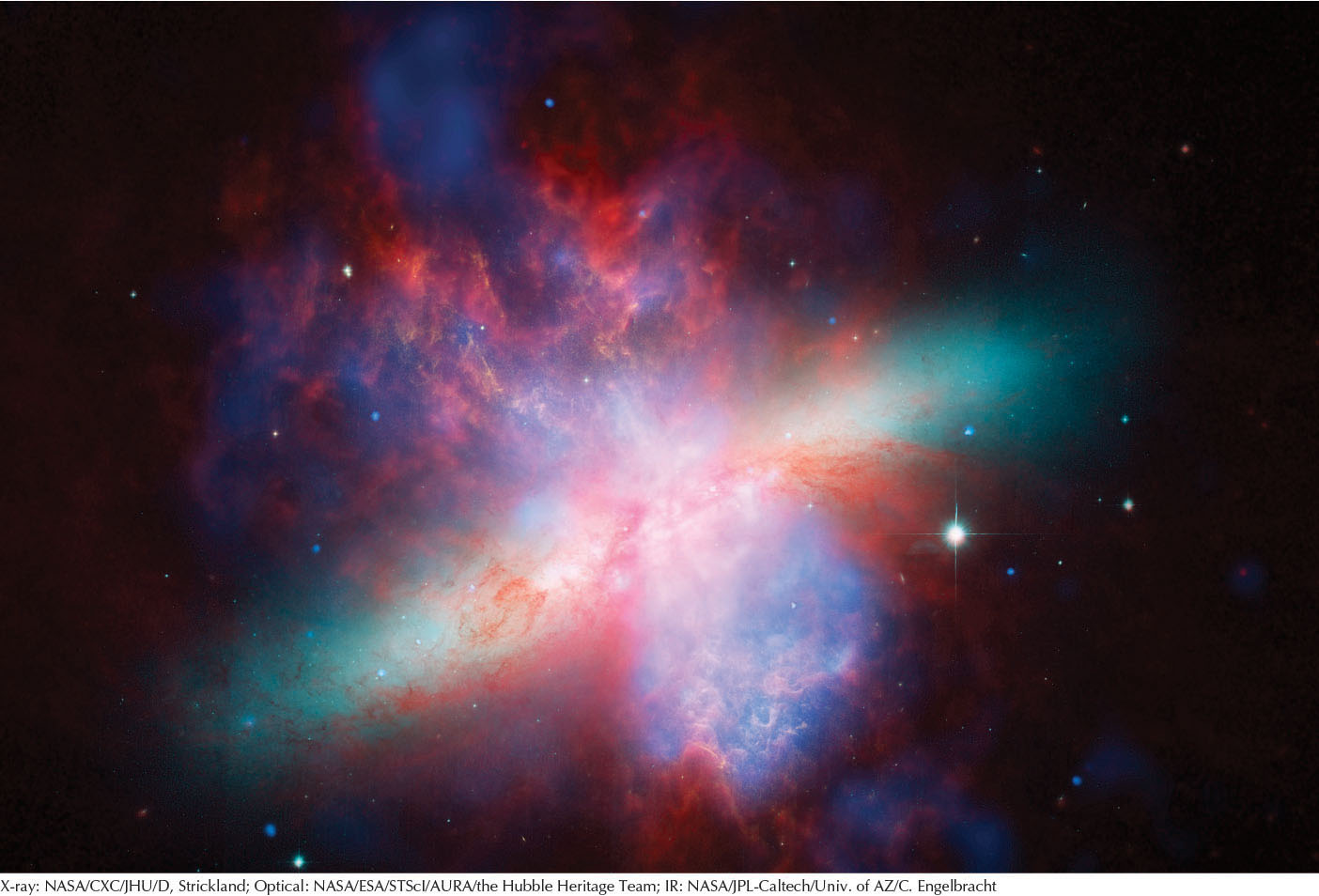481
CHAPTER 16

Galaxies
WHAT DO YOU THINK?
 Are most of the stars in spiral galaxies located in their spiral arms?
Are most of the stars in spiral galaxies located in their spiral arms?
 Do all galaxies have spiral arms?
Do all galaxies have spiral arms?
 Are galaxies isolated objects?
Are galaxies isolated objects?
 Is the universe contracting, unchanging in size, or expanding?
Is the universe contracting, unchanging in size, or expanding?
Answers to these questions appear in the text beside the corresponding numbers in the margins and at the end of the chapter.
482
We live in a galactic suburb, far from the center of the action. The Sun is just one of about 200 billion stars in the Milky Way, and our Galaxy is but one of between 50 billion and 1 trillion galaxies in the visible universe. In studying galaxies, we have entered the realm of truly cosmic systems of stars, gas, and dust. Although nearby stars are separated from us by light-years (trillions of miles), neighboring galaxies are hundreds of thousands of times farther away, and the most distant galaxies are at least 13.5 billion light-years from Earth.
Finding patterns is a powerful tool built into the human psyche. Early in the twentieth century, astronomers observed that galaxies appear in surprisingly few shapes. The classification scheme Edwin Hubble developed is where we begin our study of the large-scale structure of the universe—but that is only the beginning. By the mid-twentieth century, clusters of galaxies were discovered, followed by clusters of clusters (now called superclusters) of galaxies. Between these ensembles of stars, gas, and dust are vast regions of space relatively devoid of matter. Through establishing these patterns, astronomers now know the large-scale structure of the visible matter in the universe, which we also present in this chapter.
In this chapter you will discover
 how galaxies are categorized by their shapes
how galaxies are categorized by their shapes
 the processes that produce galaxies of different shapes
the processes that produce galaxies of different shapes
 that galaxies are found in clusters that contain huge amounts of dark matter
that galaxies are found in clusters that contain huge amounts of dark matter
 why clusters of galaxies form in superclusters
why clusters of galaxies form in superclusters
 how some galaxies merge and others devour their neighbors
how some galaxies merge and others devour their neighbors
 that the universe is changing size
that the universe is changing size